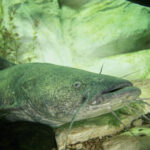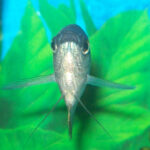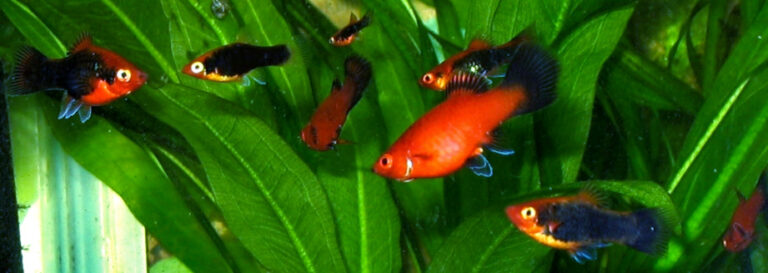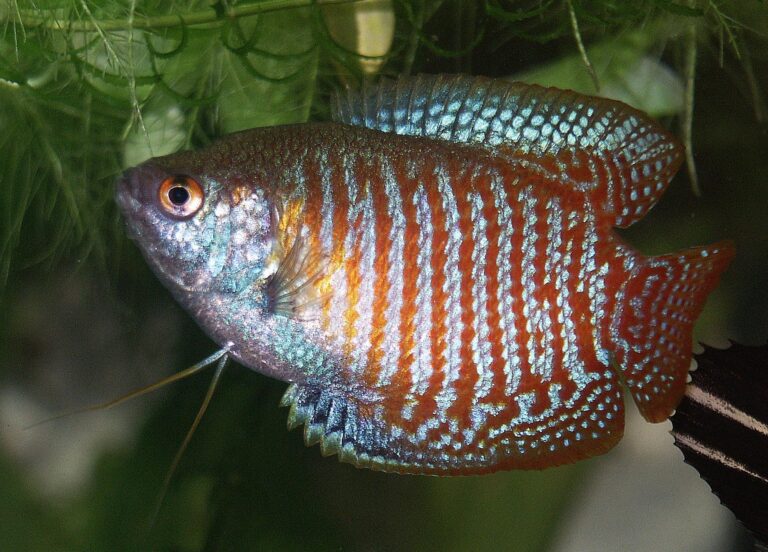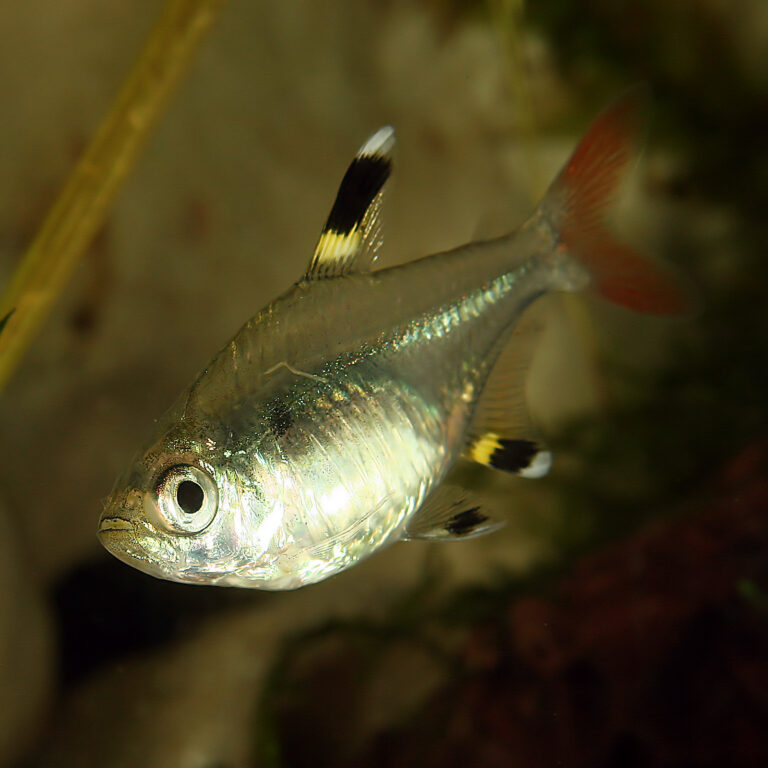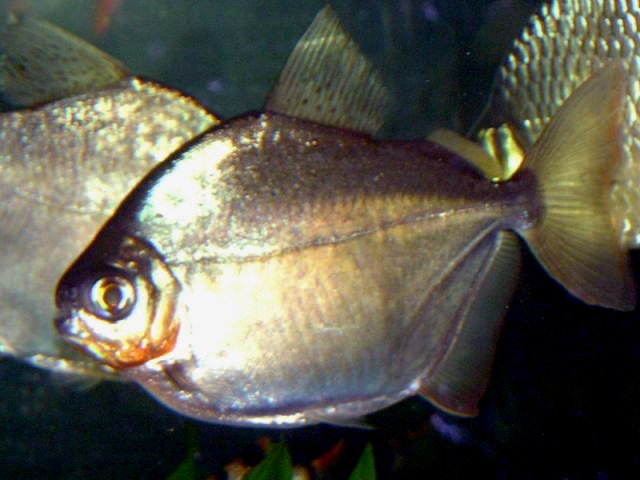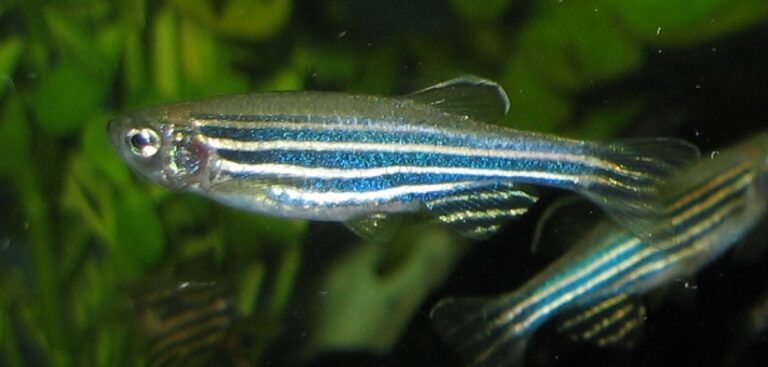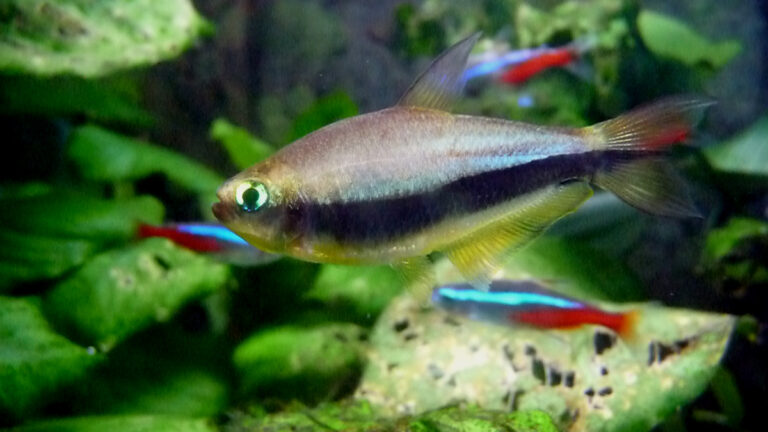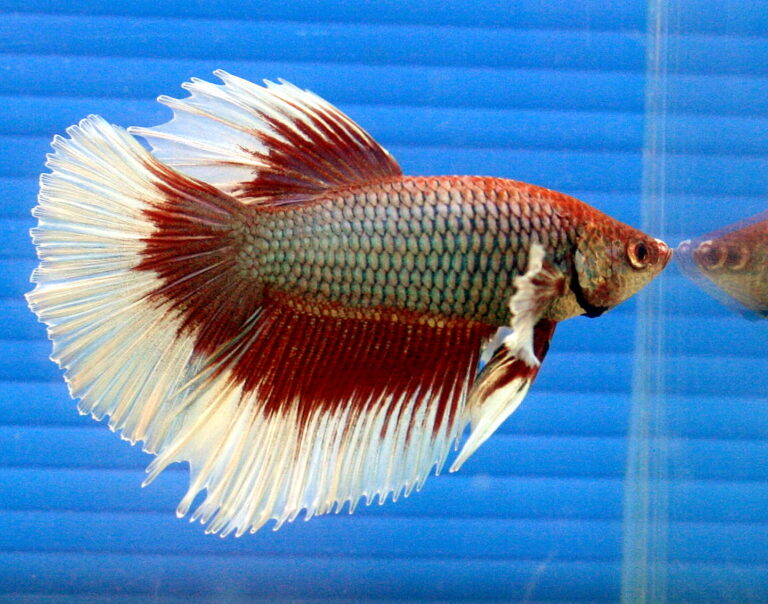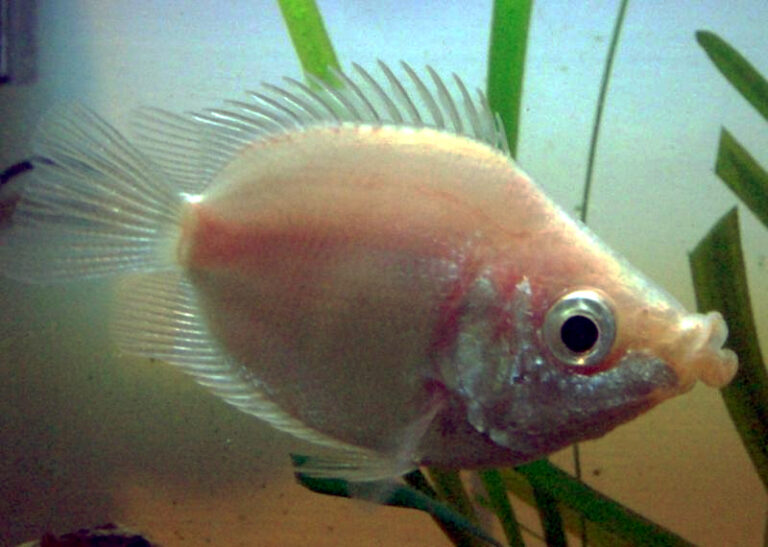Firemouth Cichlid
By Ryan Maron | Last Modified: June 9, 2025
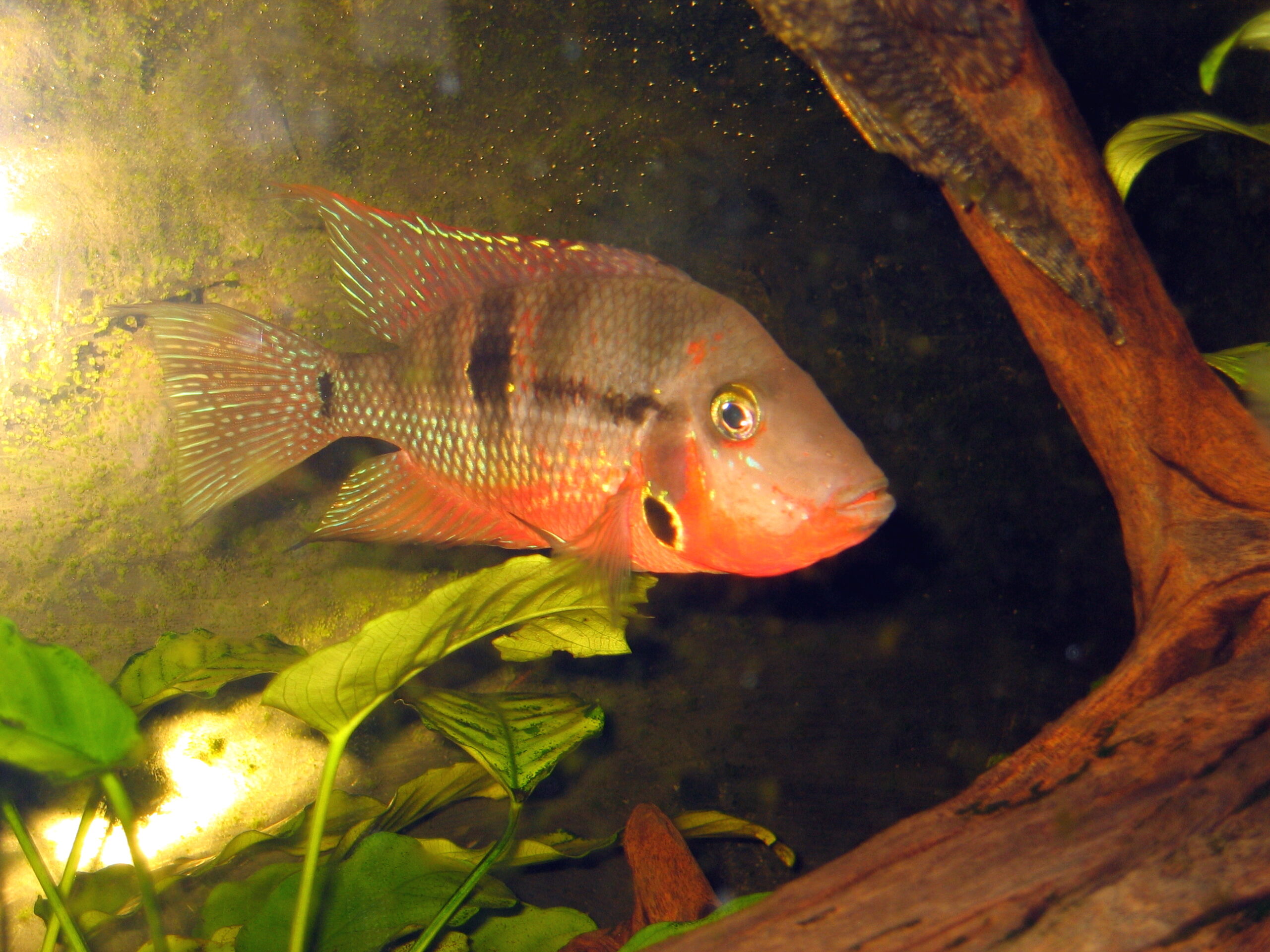
The Firemouth Cichlid (*Thorichthys meeki*) stands as one of Central America’s most recognizable freshwater fish species, distinguished by its vibrant red throat coloration and distinctive behavioral patterns. This medium-sized cichlid plays a crucial ecological role as both predator and prey within the freshwater ecosystems of Mexico’s Yucatan Peninsula and northern Guatemala. Named for the brilliant scarlet-orange coloration that extends from its throat to its belly, the Firemouth Cichlid serves as an important indicator species for healthy river and cenote systems throughout its native range. The species demonstrates remarkable adaptability to varying water conditions while maintaining complex territorial and breeding behaviors that make it a keystone species in its aquatic communities.
| Feature | Details |
|---|---|
| Common Name | Firemouth Cichlid |
| Scientific Name | Thorichthys meeki |
| Family | Cichlidae |
| Typical Size | 12-15 cm (4.7-5.9 inches), 50-80 grams |
| Habitat | Freshwater rivers, cenotes, lagoons |
| Diet | Omnivorous – invertebrates, plant matter |
| Distribution | Southeastern Mexico, Northern Guatemala |
| Conservation Status | Least Concern |
Taxonomy & Classification
The Firemouth Cichlid belongs to the family Cichlidae, one of the most diverse fish families in freshwater environments worldwide. Originally described by Brind in 1918, *Thorichthys meeki* was named in honor of Seth Eugene Meek, an American ichthyologist who conducted extensive research on Central American fish fauna. The genus *Thorichthys* encompasses several closely related species distributed throughout Central America, with the Firemouth Cichlid representing the most widely recognized member.
Within the taxonomic hierarchy, the species classification follows: Kingdom Animalia, Phylum Chordata, Class Actinopterygii, Order Perciformes, Family Cichlidae, Subfamily Cichlasomatinae, Genus *Thorichthys*, Species *T. meeki*. Recent molecular studies have confirmed the species’ position within the Central American cichlid radiation, showing close evolutionary relationships to other *Thorichthys* species including *T. aureus* and *T. helleri*.
The subfamily Cichlasomatinae represents the New World cichlids, distinguishing them from their African and Asian counterparts through distinct morphological and behavioral characteristics. Genetic analysis reveals that the Firemouth Cichlid diverged from its closest relatives approximately 2-3 million years ago during the Pliocene epoch, coinciding with geological changes in the Central American landscape.
Physical Description
The Firemouth Cichlid exhibits distinctive morphological features that make it easily identifiable among Central American freshwater fish species. Adults typically reach lengths of 12-15 centimeters, with females generally remaining slightly smaller than males. The body displays a laterally compressed, oval shape characteristic of cichlid species, with a relatively high back profile and streamlined form adapted for maneuvering through vegetation-rich environments.
The species’ most striking feature is the brilliant red-orange coloration extending from the throat region to the anterior portion of the belly, creating the fiery appearance that gives the fish its common name. This coloration intensifies during breeding periods and territorial displays, serving as both a species recognition signal and intimidation mechanism. The body base color ranges from pale gray to bluish-silver, adorned with six to seven vertical dark bars extending from the dorsal region toward the belly.
Sexual dimorphism becomes apparent in mature specimens, with males developing more pronounced coloration and extended fin filaments. Males exhibit longer dorsal and anal fin extensions, while females maintain a more subdued coloration pattern with fuller body profiles during breeding condition. The dorsal fin contains 15-17 spines followed by 10-12 soft rays, while the anal fin features 6-7 spines and 8-9 soft rays. Both sexes possess pharyngeal teeth adapted for processing both plant and animal matter, reflecting their omnivorous feeding strategy.
Habitat & Distribution
The Firemouth Cichlid inhabits freshwater systems throughout southeastern Mexico and northern Guatemala, with populations concentrated in the Yucatan Peninsula’s unique hydrological landscape. The species thrives in diverse aquatic environments including slow-moving rivers, cenotes, coastal lagoons, and interconnected cave systems that characterize the region’s limestone geology. Water temperatures in these habitats typically range from 22-28°C (72-82°F), with pH levels varying between 7.0-8.5.
Natural habitat complexity plays a crucial role in supporting Firemouth Cichlid populations, with rocky substrates, submerged logs, and dense aquatic vegetation providing essential cover and spawning sites. The species demonstrates remarkable adaptability to varying water conditions, tolerating both soft and moderately hard water while showing preference for well-oxygenated environments with moderate current flow.
Seasonal water level fluctuations significantly influence distribution patterns, with fish moving between deeper permanent waters during dry periods and expanding into shallow floodplain areas during rainy seasons. This seasonal migration behavior allows access to rich feeding grounds and diverse spawning habitats throughout their range. Human activities including agricultural development and urban expansion have fragmented some historical habitat areas, though the species maintains stable populations across most of its native distribution.
The interconnected nature of Yucatan Peninsula waterways facilitates gene flow between populations, maintaining genetic diversity across the species’ range. Cenotes, unique freshwater sinkholes found throughout the region, provide critical refuge habitats during extreme weather events and serve as important nursery areas for juvenile fish development.
Diet & Feeding Behavior
The Firemouth Cichlid demonstrates omnivorous feeding habits with opportunistic foraging behavior adapted to exploit diverse food resources within its freshwater habitat. The species exhibits both benthic and mid-water feeding strategies, using specialized pharyngeal teeth to process a wide variety of prey items and plant materials. Primary food sources include aquatic invertebrates such as chironomid larvae, small crustaceans, worms, and various insect larvae that inhabit sediment and vegetation zones.
Plant matter constitutes a significant portion of the diet, particularly algae, soft aquatic plants, and detritus found on substrate surfaces. The species employs a characteristic feeding behavior of sifting through fine sediments, extracting organic matter while expelling sand and debris through the gill openings. This feeding strategy plays an important ecological role in nutrient cycling within aquatic ecosystems.
Foraging patterns vary with seasonal availability of food resources, with increased invertebrate consumption during warmer months when aquatic insect populations peak. During breeding periods, adults may consume small fish and fish eggs, supplementing protein requirements for reproductive activities. Juvenile Firemouth Cichlids initially feed on microscopic organisms including rotifers and small zooplankton before transitioning to adult feeding patterns as they mature.
The species demonstrates territorial feeding behavior around preferred foraging sites, with dominant individuals controlling access to resource-rich areas. This territorial system helps reduce competition while ensuring adequate nutrition for successful reproduction and growth. Water temperature significantly influences feeding activity, with optimal foraging occurring at temperatures between 24-27°C when metabolic rates support active hunting and digestion.
Behavior & Adaptations
Firemouth Cichlids exhibit complex behavioral patterns centered around territorial defense, social hierarchy, and reproductive activities. The species demonstrates highly developed territorial behavior, with individuals establishing and defending specific areas containing suitable shelter, feeding grounds, and potential spawning sites. Territory size varies based on habitat quality and population density, typically ranging from 0.5-2 square meters per individual.
Communication occurs through multiple modalities including visual displays, body positioning, and chemical signals. The characteristic threat display involves flaring the gill covers while extending the bright red throat region, creating an intimidating appearance designed to deter competitors and predators. This behavioral adaptation proves particularly effective due to the species’ distinctive coloration pattern that serves as both warning signal and species identification marker.
Social structure follows a dominance hierarchy system where larger, more aggressive individuals control prime territories and resources. Subordinate fish adopt different behavioral strategies including temporary territory establishment in marginal habitats or nomadic movement patterns between established territories. These behavioral adaptations allow multiple individuals to coexist within limited habitat areas while minimizing direct confrontation.
The species exhibits remarkable intelligence and learning capacity, demonstrated through problem-solving abilities and environmental adaptation. Individuals can modify foraging strategies based on food availability, adjust territorial boundaries in response to population changes, and develop complex breeding behaviors that increase reproductive success. Similar cognitive abilities have been documented in various angelfish species and other advanced cichlid groups.
Reproduction & Life Cycle
The Firemouth Cichlid breeding cycle follows a complex pattern of courtship, spawning, and extended parental care that reflects the advanced reproductive strategies characteristic of cichlid species. Sexual maturity occurs at approximately 8-12 months of age when individuals reach lengths of 8-10 centimeters. Breeding activity peaks during warmer months when water temperatures consistently exceed 25°C and food resources are abundant.
Courtship behavior begins with territorial establishment by sexually mature males who select and defend suitable spawning sites, typically flat rock surfaces or cleared sandy areas within protected locations. Males display intensified coloration and perform elaborate courtship dances to attract females, including circular swimming patterns, fin displays, and gentle nudging behaviors. Receptive females respond with complementary swimming patterns and color changes indicating breeding readiness.
Spawning occurs through external fertilization with females depositing 100-300 adhesive eggs on prepared substrate surfaces while males simultaneously release sperm for fertilization. Both parents share responsibilities for egg care, including fanning for oxygenation, debris removal, and protection from predators. Incubation typically lasts 3-4 days at optimal temperatures, with hatching success rates exceeding 80% under favorable conditions.
Post-hatching parental care extends for 4-6 weeks, during which both parents actively protect and guide fry through early development stages. Parents exhibit sophisticated brood care behaviors including shepherding fry to feeding areas, defending against predators, and providing guidance for proper foraging techniques. This extended parental investment significantly increases juvenile survival rates compared to species lacking such advanced care behaviors. The reproductive strategy employed by Firemouth Cichlids shares similarities with other Central American cichlids, though specific behavioral patterns may vary between closely related species.
Predators & Threats
Natural predation pressure on Firemouth Cichlid populations comes from multiple sources across different life stages, with vulnerability patterns changing as individuals mature from larvae to adults. Larval and juvenile stages face predation from aquatic invertebrates including dragonfly nymphs, water beetles, and larger aquatic insects that inhabit shallow vegetated areas where young fish seek shelter and food.
Adult predators include larger fish species such as *Atractosteus tropicus* (tropical gar), various snake species including *Thamnophis proximus* (ribbon snake), and wading birds such as herons and egrets that hunt in shallow water environments. Nocturnal predators including *Rhamdia guatemalensis* (Central American catfish) pose additional threats during low-light periods when Firemouth Cichlids exhibit reduced vigilance behavior.
Anthropogenic threats represent increasingly significant challenges to wild populations, particularly habitat modification through agricultural development, urban expansion, and water extraction for human use. Pollution from agricultural runoff introduces pesticides and fertilizers that can disrupt reproductive behavior, reduce food availability, and compromise water quality in critical habitat areas.
Climate change impacts include altered precipitation patterns affecting seasonal water level fluctuations, temperature increases that may exceed optimal ranges, and increased frequency of extreme weather events. These environmental changes can fragment populations, reduce habitat connectivity, and stress fish beyond their adaptive capacity. Introduction of non-native species poses additional competitive pressure, though Firemouth Cichlids have shown resilience to moderate ecological disturbances through behavioral flexibility and habitat adaptability.
The species’ territorial behavior and parental care strategies provide some protection against predation, particularly during vulnerable breeding periods when adults actively defend offspring against potential threats.
Conservation Status
The International Union for Conservation of Nature (IUCN) currently classifies the Firemouth Cichlid as “Least Concern” based on stable population trends and relatively wide distribution throughout its native range. Population assessments indicate that the species maintains viable numbers across most historical habitat areas, with no evidence of significant range-wide declines that would warrant elevated conservation concern.
However, localized population pressures exist in areas experiencing intensive human development, particularly around urban centers and agricultural regions where habitat modification has been extensive. Water quality monitoring in some areas has detected elevated nutrient levels and chemical contaminants that could impact long-term population health, though current levels appear within tolerable ranges for most populations.
Conservation efforts focus on habitat preservation and water quality maintenance rather than direct species management, recognizing that ecosystem-level protection provides the most effective approach for maintaining healthy Firemouth Cichlid populations. Protected areas within the species’ range, including biosphere reserves and national parks, provide crucial habitat refugia that support population stability and genetic diversity.
Research priorities include long-term population monitoring, assessment of climate change impacts, and evaluation of habitat connectivity requirements for maintaining gene flow between populations. Collaborative efforts between Mexican and Guatemalan conservation organizations help coordinate management strategies across international boundaries within the species’ range.
The species’ adaptability to varying environmental conditions and successful reproduction in both natural and modified habitats contribute to its favorable conservation status, though continued monitoring remains important for detecting potential future threats.
Human Interaction
The Firemouth Cichlid has developed significant economic and cultural importance through the international aquarium trade, where it ranks among the most popular Central American cichlid species. The combination of attractive coloration, manageable size, and relatively peaceful temperament makes it highly sought after by aquarium enthusiasts worldwide. Annual export numbers from range countries contribute substantially to local economies while supporting conservation through sustainable collection practices.
Traditional fishing communities within the species’ native range have historically utilized Firemouth Cichlids as a food source, though subsistence fishing pressure remains well within sustainable levels. Local ecological knowledge accumulated by indigenous communities provides valuable insights into species behavior, habitat requirements, and environmental changes that complement scientific research efforts.
Aquaculture operations have successfully established breeding programs for commercial production, reducing pressure on wild populations while meeting market demand. These facilities have developed optimized breeding protocols and nutritional programs that support high-quality fish production for both domestic and international markets. Commercial breeding success has also facilitated research into species biology and behavior under controlled conditions.
Educational programs featuring Firemouth Cichlids help promote awareness of Central American aquatic biodiversity and conservation needs. Public aquariums frequently display the species as representatives of regional freshwater ecosystems, highlighting the unique geological and biological characteristics of cenote and river systems throughout the Yucatan Peninsula.
The species serves as an indicator for ecosystem health monitoring programs, where population trends and reproduction success provide insights into overall habitat quality and environmental changes. This application proves particularly valuable in areas where human activities may impact water quality or habitat structure.
Interesting Facts
The Firemouth Cichlid possesses several remarkable adaptations that distinguish it from other freshwater fish species. The species can survive in extremely low oxygen conditions by utilizing both gill respiration and limited air breathing at the water surface, an adaptation that proves crucial during dry season habitat contractions when fish become concentrated in reduced water volumes.
Firemouth Cichlids demonstrate sophisticated learning abilities including tool use behavior where individuals manipulate small objects to access food resources or modify their environment for improved shelter. This cognitive capacity rivals that documented in much larger fish species and reflects the advanced neural development characteristic of cichlid evolution.
The species exhibits unique parental care behaviors including cooperative breeding systems where non-breeding individuals assist with fry protection and territory defense. These helper behaviors increase overall reproductive success while providing learning opportunities for younger fish that may not yet be sexually mature.
Color change abilities extend beyond simple threat displays, with individuals capable of rapid chromatophore adjustments that provide camouflage in different habitat zones. This adaptation proves particularly important in cenote environments where lighting conditions vary dramatically with depth and vegetation cover.
Firemouth Cichlids can recognize individual conspecifics and maintain social relationships that persist across multiple breeding seasons. This social memory capacity facilitates complex territorial arrangements and reduces aggressive interactions between familiar individuals, contributing to population stability in high-density areas.
The species demonstrates remarkable site fidelity, with some individuals returning to the same spawning locations across multiple breeding seasons despite seasonal habitat changes that may temporarily displace fish to alternative areas. This homing behavior suggests sophisticated spatial memory and navigation capabilities that enhance reproductive success through optimal site selection.
Frequently Asked Questions
What makes the Firemouth Cichlid’s red coloration so vibrant?
The intense red-orange coloration results from specialized chromatophores containing carotenoid pigments concentrated in the throat and belly regions. These pigments are obtained through diet and become more concentrated during territorial disputes and breeding periods when hormonal changes trigger expanded chromatophore activity. The coloration serves multiple functions including species recognition, threat display, and mate attraction.
How do Firemouth Cichlids adapt to varying water conditions in their natural habitat?
The species possesses physiological adaptations including flexible osmoregulation that allows survival in waters ranging from soft to moderately hard conditions. Their kidney function adjusts to maintain proper electrolyte balance across different mineral concentrations, while behavioral adaptations include seeking optimal microhabitats within their territory that provide preferred water quality conditions.
What role do Firemouth Cichlids play in their ecosystem?
Firemouth Cichlids function as important intermediate predators that help control invertebrate populations while serving as prey for larger fish and birds. Their feeding behavior contributes to nutrient cycling through sediment processing and waste production. Additionally, their territorial behavior creates habitat structure that benefits other fish species by maintaining diverse microhabitat zones within aquatic communities.
Conclusion
The Firemouth Cichlid represents a remarkable example of evolutionary adaptation and ecological success within Central American freshwater systems. Its complex behavioral repertoire, distinctive morphological features, and critical ecosystem functions demonstrate the intricate relationships that define healthy aquatic communities. As both an economically valuable species and an important indicator of environmental health, the Firemouth Cichlid continues to provide insights into conservation strategies and sustainable resource management throughout its native range.
Share The Article:
More Fish Species:
-
Wagtail Platy
The Wagtail Platy stands as one of the most distinctive and beloved freshwater aquarium fish, renowned for its elegant…
-
Delta Tail Betta
The Delta Tail Betta (Betta splendens) represents one of the most recognizable and sought-after varieties within the aquarium trade,…
-
Dwarf Gourami
The Dwarf Gourami (Trichogaster lalius) stands as one of the most popular freshwater aquarium fish species, renowned for its…
-
Pristella Tetra
The Pristella Tetra (Pristella maxillaris) stands as one of South America’s most distinctive freshwater aquarium species, renowned for its…
-
Blue Shark
The Blue Shark (Prionace glauca) represents one of the ocean’s most accomplished travelers, traversing entire ocean basins in epic…
-
Silver Dollar Fish
The Silver Dollar Fish (*Metynnis argenteus*) stands as one of South America’s most recognizable freshwater species, renowned for its…
Discover
-
Fishing with Kids: How to Make It Fun and Educational
I’ll never forget the look on my son Tommy’s face when he caught his first bluegill. He was six,…
-
How to Fish with Dry Flies: Beginner’s Guide to Surface Action
There’s something almost magical about watching a trout rise to sip your dry fly from the surface. I still…
-
How to Fish in Murky Water: Expert Michigan Angler Shares Secrets
Last Tuesday, I was standing knee-deep in chocolate-colored water where Kellogg Creek dumps into the Kalamazoo River. Water visibility:…
-
Why Stoner Fish Catch is Different: Unusual Angling Tactics
Let’s face it – some fish just act plain weird. Whether you’re an experienced angler or just starting out,…
-
15 Panfish Fishing Secrets: Easy Catches for Beginners & Pros
You know what’s funny about panfish? These little fighters have probably hooked more new anglers than any other species,…
-
Beluga Fishing: Techniques That Actually Work (Not Theory)
When it comes to beluga fishing, there’s a world of difference between what you read in theory and what…
Discover
-
Zebra Danio
The Zebra Danio (Danio rerio) stands as one of freshwater aquarium keeping’s most recognizable and scientifically significant species. This…
-
Bubble Eye Goldfish
The Bubble Eye Goldfish stands as one of the most distinctive and recognizable varieties of ornamental goldfish, captivating aquarists…
-
Emperor Tetra
The Emperor Tetra (*Nematobrycon palmeri*) stands as one of the most distinctive and sought-after freshwater fish species in the…
-
Half Moon Betta
The Half Moon Betta (Betta splendens) represents one of the most distinctive and sought-after varieties within the Siamese fighting…
-
Kissing Gourami
The Kissing Gourami (*Helostoma temminckii*) stands as one of the most distinctive and recognizable freshwater fish species in both…
-
How to Spool a Baitcaster for Beginners: 6 Simple Steps
I remember the first time I tried spooling a baitcaster reel. What should have been a simple 15-minute job…


